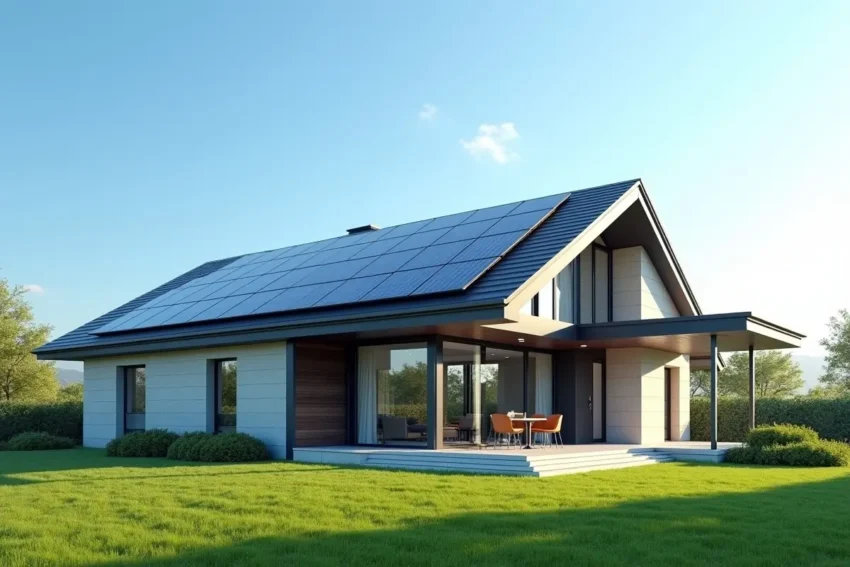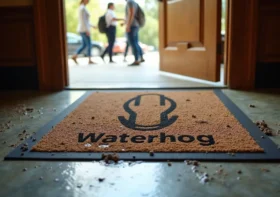Sustainable Roofing Practices for Modern Homes

As homeowners increasingly prioritize environmental responsibility, modern construction and renovation projects explore roofing solutions that reduce ecological impact. Sustainable roofing uses materials and techniques that minimize energy consumption, lower waste, and improve a building’s overall efficiency.
From reflective shingles that reduce heat absorption to recycled metal and green roofs that support vegetation, these approaches offer long-term benefits for both the environment and the homeowner. Collaborating with a knowledgeable roofing company can help ensure that installations are durable and align with best practices for sustainability, balancing aesthetic appeal with environmental consciousness.
In addition to material choices, sustainable roofing emphasizes durability and energy efficiency. Proper insulation, ventilation, and water management reduce the need for frequent repairs and limit energy usage, lowering utility costs over time. Innovative techniques, such as rainwater harvesting and solar panel integration, further enhance a home’s eco-friendly footprint.
Consulting with a residential roofing company provides guidance on which solutions best suit a home’s climate, design, and maintenance requirements. By embracing these practices, homeowners contribute to a more sustainable future while enjoying the practical advantages of modern, environmentally aware construction.
Contents
Utilizing Recycled Materials
Recycled roofing materials are growing in popularity as people seek to divert waste from landfills and minimize resource extraction. Shingles and tiles made from repurposed plastic, rubber, wood fiber, or even metal often match or exceed the durability of standard products. In addition to lowering the carbon footprint during manufacturing, they can replicate the look of slate or wood shakes for a sophisticated aesthetic. This approach is key for homeowners who value both sustainability and style.
Implementing Cool Roofs
Cool roofs are specifically engineered to reflect more sunlight and absorb less heat than typical roofing, minimizing the urban heat island effect and cooling your home. By employing reflective roof coatings, light-colored shingles, or cool tile designs, these roofs drastically reduce the need for air conditioning during hot weather.
The U.S. Department of Energy highlights that cool roofs can lower a roof’s surface temperature by up to 50°F, significantly saving summer energy bills and boosting comfort. This optimization can also extend your roof’s lifespan by reducing thermal expansion and contraction stresses.
Integrating Solar Roofing
Solar roofing blends the advantages of electricity generation with the protective function of a roof. Beyond the traditional solar panel arrays, recent advancements now allow for solar shingles and tiles that become an unobtrusive part of your overall roofing design.
These products enable direct clean energy generation, decreasing dependence on fossil fuels while boosting your property’s value and independence from the grid. With incentives and tax breaks often available, the return on investment for solar roofs continues to improve.
Adopting Green Roofs
Green roofs, sometimes called living roofs, involve the installation of soil and plants atop a waterproof membrane. This living layer offers many advantages for both homes and cities: insulation, stormwater management, and biodiversity enhancement.
A living roof traps pollutants, encourages wildlife, and provides a beautiful oasis of greenery. Even in urban settings, green roofs cool buildings naturally and extend the longevity of roofing materials by shielding them from direct sunlight. For those in cities, they’re a smart remedy for polluted air and excess heat.
Choosing Natural Roofing Materials
Choosing natural roofing materials like clay, slate, or sustainably sourced wood benefits the environment. Clay and slate are durable, recyclable, and require little processing. Certified, maintained sustainable wood shakes or shingles provide biodegradable options that add rustic charm. These materials reduce chemical use during construction and disposal, aiding air and water quality. Their textures and tones appeal to homeowners seeking an authentic, landscape-harmonizing style.
Prioritizing Durability
Durability is a cornerstone of sustainable roofing, as long-lasting materials reduce the frequency of replacement and waste. High-quality metal, clay tile, and slate roofs can endure for fifty years or more, minimizing the environmental burden of repeated re-roofing cycles.
These materials often require little upkeep and withstand severe weather, which is especially beneficial as climate volatility increases. By considering the full lifecycle costs—and not just the initial price—homeowners can make choices that provide eco-friendly advantages and long-term savings on repairs and replacements.
Exploring Incentives and Rebates
Government agencies and local utilities frequently encourage sustainable home upgrades through rebates, tax credits, and other financial incentives. Investing in energy-efficient or green roofing can unlock these benefits, reducing the up-front expense and quickening the payback period.
Some incentives target solar installation, while others may include green or cool roofs under broader home energy programs. Homeowners should check with state and local energy offices or the Department of Energy’s Database of State Incentives for Renewables & Efficiency® (DSIRE) to discover what programs are available in their area.
Conclusion
Modern homeowners have a diverse and versatile set of sustainable roofing solutions to consider. By choosing recycled-content materials, cooling technologies, solar integration, living roofs, natural materials, and durable products, it is possible to create an environmentally responsible home without sacrificing performance, comfort, or style. Leveraging available incentives only enhances these advantages, making now the perfect time to embrace sustainable roofing as a key element of your eco-friendly lifestyle.



